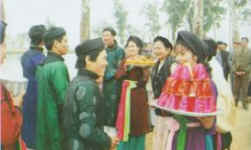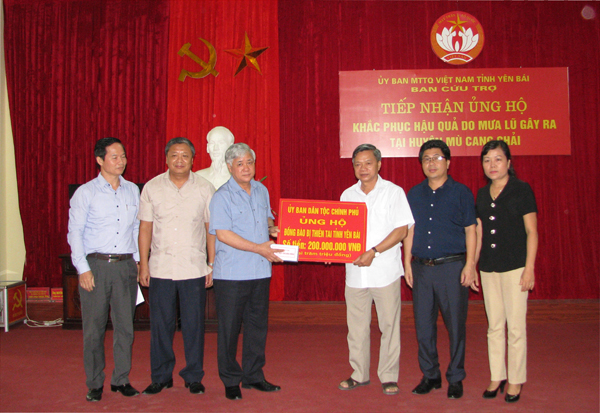They carry out cultivation in submerged fields. In the growing of wet rice, they erect dykes and dig canals. Gardening, sericulture, cattle and poultry raising, fresh water and sea fishing flourish, Pottery developed very early.
It is their habit to chew betel, smoke water pipe and cigarette and drink tea. Apart from ordinary and glutinous rice, there are rice gruel and steamed glutinous rice. Shrimp paste and halt-hatched duck egg are their favourites.
The traditional attire of the Kinh in the north is brown pyjama for men, arid four-panelled robe, bra and trousers for women, also in brown colour. In the southern delta plain, both men and women wear black pyjamas.
The Kinh villages are usually surrounded by bamboo groves and many have solid gates. Each village has a communal house which is the place of meeting and common ritual ceremonies. The Kinh live in mud houses.
The husband (father) is the head of the family. Children take the family name of their father and relatives on the father's side are called "ho nor" (Paternal relatives), and those on the mother's side "ho ngoai" (Maternal relatives). The eldest son is responsible for the worship of dead parents and grandparents. Each family lineage has a temple of forefathers and the head of the family lineage handles common affairs
In marriage, monogamy is observed. 'The family of the man seeks marriage and organizes wedding for him; after the wedding party the bride lives with her husband's family. The Kinh attach much importance to fidelity and virtues of the brides and also to their family stock.
They worship their ancestors. Dead persons are worshipped every year at the date of death. Their graves are visited and looked after frequently by next of kin. The peasants hold annual festivals linked with agricultural beliefs. Buddhism, Confucianism, Taoism and imported Christianity are practised to various extents.
The asset of ancient literature of the Kinh is fairly rich: oral literature (old tales, folk ballads, proverbs), written literature (poems, writings, books, edicts). Art sees early development and attains a high level in many respects: song, music, sculpture, painting dance and performance. Annual festivals are time for lively art activities, most attractive in the countryside.







